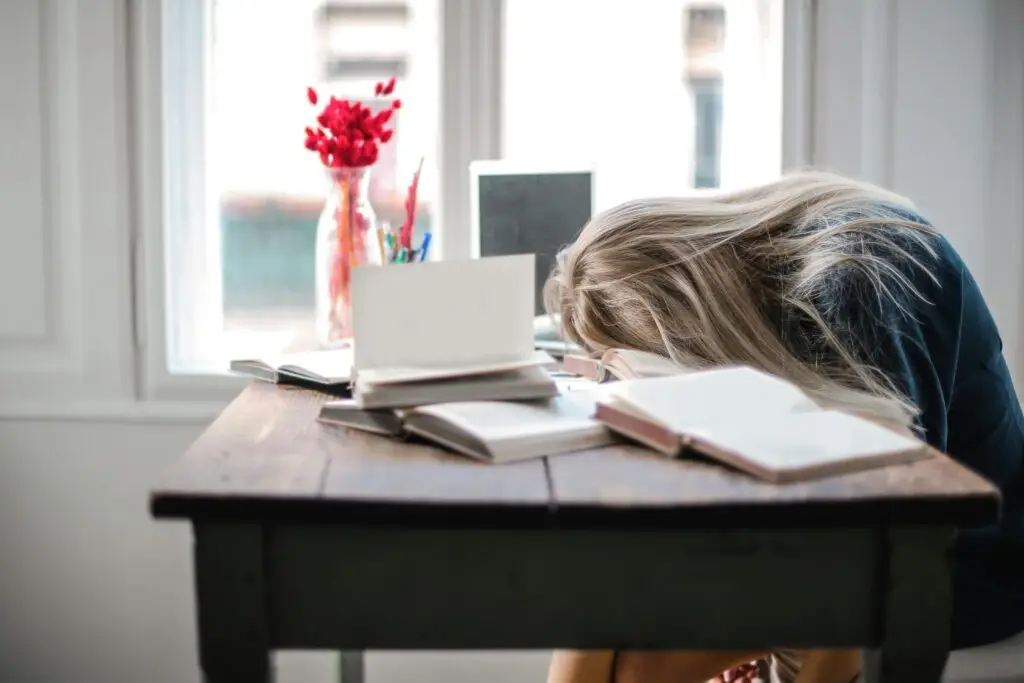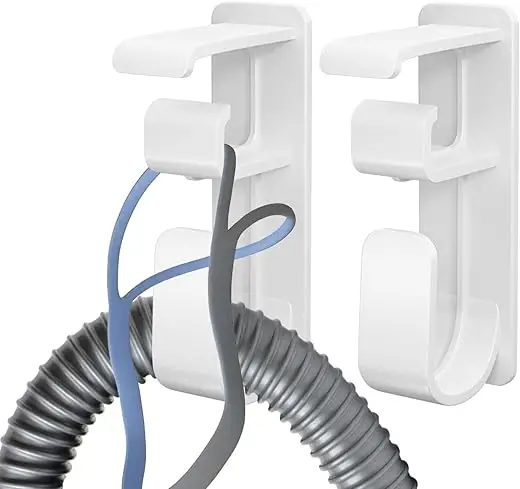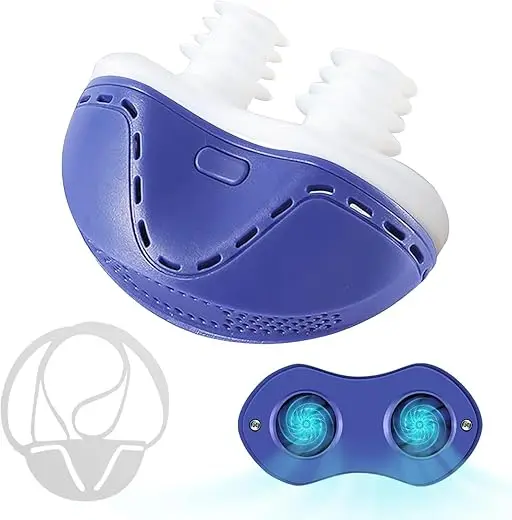The Misdiagnosed Mental Health Crisis
Up to 63% of people with sleep apnea suffer from depression, while those with depression are 5 times more likely to have sleep apnea. Yet 80% are misdiagnosed and treated with antidepressants that don’t work—because the real problem is oxygen deprivation, not serotonin imbalance. Studies show treating sleep apnea resolves depression in 70% of cases, often within weeks.
For years, you’ve been told you have treatment-resistant depression. You’ve tried multiple antidepressants, therapy, lifestyle changes—nothing works. You’re exhausted, hopeless, and starting to believe you’ll never feel better. But what if your depression isn’t depression at all? What if it’s your brain’s response to being suffocated every night? This guide reveals the hidden connection between sleep apnea and depression that could change your life.
How Sleep Apnea Causes Depression
The Biological Mechanisms
Neurotransmitter Disruption: Sleep apnea destroys brain chemistry:
- Serotonin production drops 45%
- Dopamine regulation fails
- Norepinephrine imbalanced
- GABA synthesis reduced
- Melatonin rhythm destroyed
Brain Structure Changes: Chronic oxygen deprivation causes:
- Hippocampal atrophy (emotion regulation)
- Prefrontal cortex damage (mood control)
- White matter lesions
- Reduced gray matter volume
- Neural connectivity disruption
Inflammatory Cascade:
- Cytokines increased 300%
- IL-6 and TNF-alpha elevated
- Neuroinflammation chronic
- Blood-brain barrier compromised
- Oxidative stress severe
The Sleep Architecture Destruction
REM Sleep Loss:
- REM crucial for emotional processing
- Sleep apnea fragments REM
- Emotional memories unprocessed
- Mood regulation fails
- Depression inevitable
Deep Sleep Deprivation:
- N3 sleep when brain repairs
- Growth hormone released
- Mood stabilizers produced
- Sleep apnea prevents deep sleep
- Brain cannot recover
The Exhaustion Factor
Chronic Fatigue Depression:
- Exhaustion mimics depression perfectly
- No energy for activities
- Social withdrawal
- Cognitive impairment
- Hopelessness develops
- Motivation disappears
Depression Symptoms Caused by Sleep Apnea
Core “Depression” Symptoms
Mood Symptoms:
- Persistent sadness (actually exhaustion)
- Hopelessness (from chronic fatigue)
- Irritability (sleep deprivation)
- Emotional numbness (cognitive fog)
- Anxiety (from nighttime suffocation)
- Mood swings (hormonal disruption)
Cognitive Symptoms:
- Concentration problems
- Memory impairment
- Decision-making difficulty
- Mental fog
- Negative thought patterns
- Suicidal ideation (severe cases)
Physical Symptoms:
- Extreme fatigue
- Body aches
- Headaches
- Weight changes
- Libido loss
- Digestive issues
Behavioral Changes:
- Social isolation
- Activity withdrawal
- Work problems
- Relationship issues
- Substance use
- Sleep avoidance
The Morning Depression Pattern
Why Mornings Are Worst:
- Night’s oxygen deprivation accumulated
- Cortisol dysregulation
- Neurotransmitter depletion
- Sleep debt maximal
- Anticipatory dread
- Physical symptoms peak
This pattern is distinctive of sleep apnea depression vs. primary depression, which often worsens in evening.
The Misdiagnosis Epidemic
Why Doctors Miss It
System Failures:
- Psychiatrists don’t ask about sleep breathing
- Sleep doctors don’t assess mood
- Primary care rushed
- Fragmented healthcare
- Insurance barriers
- Stigma issues
Diagnostic Mistakes:
- Focus on mood symptoms
- Ignore sleep quality details
- Don’t ask about snoring
- Miss fatigue significance
- Assume psychological cause
- Quick to medicate
The Failed Treatment Cycle
Typical Progression:
- Depression diagnosis
- SSRI prescribed
- Partial/no improvement
- Medication increased
- Second antidepressant added
- “Treatment-resistant” label
- More medications
- Years of suffering
- Sleep apnea finally discovered
- Rapid improvement with CPAP
Gender Differences in Misdiagnosis
Women:
- More likely diagnosed with depression
- Sleep apnea symptoms dismissed
- Hormonal factors blamed
- Multiple antidepressants tried
- Years of wrong treatment
Men:
- Depression underdiagnosed
- Sleep apnea more recognized
- Anger/irritability focus
- Substance use common
- Later presentation
Types of Depression Linked to Sleep Apnea
Treatment-Resistant Depression
The Red Flag:
- Multiple medications failed
- Therapy ineffective
- ECT considered/tried
- Symptoms persist years
- Physical symptoms prominent
- Morning pattern
The Reality: 70% of “treatment-resistant” depression cases have undiagnosed sleep disorders.
Major Depressive Disorder
OSA-Induced MDD:
- Meets all criteria
- But caused by sleep apnea
- Resolves with CPAP
- No antidepressants needed
- Rapid improvement
- Complete remission possible
Dysthymia (Persistent Depressive Disorder)
The Chronic Pattern:
- Years of low-grade depression
- “Always been this way”
- Functional but miserable
- Often undiagnosed OSA
- Dramatic improvement possible
Seasonal Affective Disorder Mimic
Winter “Depression”:
- Actually worse sleep apnea in winter
- Weight gain
- Nasal congestion
- Less activity
- Indoor allergens
- Misdiagnosed as SAD
Recognizing Sleep Apnea Depression
Distinctive Features
Sleep Apnea Depression Has:
- Physical symptoms prominent
- Morning worsening
- Partner reports snoring
- Cognitive symptoms severe
- Responds poorly to antidepressants
- Improves with naps
Primary Depression Has:
- Clear psychological triggers
- Evening worsening often
- No breathing issues
- Emotional symptoms lead
- Responds to medications
- Naps don’t help
Red Flag Combinations
High Suspicion for OSA:
- Depression + snoring
- Depression + morning headaches
- Depression + witnessed apneas
- Depression + obesity
- Depression + hypertension
- Depression + male over 40
Screening Questions
Ask Yourself:
- Does partner complain about snoring?
- Do you wake gasping/choking?
- Are mornings your worst time?
- Do naps temporarily help mood?
- Have antidepressants failed?
- Is fatigue your main symptom?
The Bidirectional Relationship
How Depression Worsens Sleep Apnea
Behavioral Factors:
- Weight gain from depression
- Sedentary lifestyle
- Alcohol self-medication
- Poor sleep hygiene
- Medication side effects
Physiological Changes:
- Inflammation increased
- Muscle tone reduced
- Breathing pattern altered
- Stress hormones elevated
- Immune function impaired
The Vicious Cycle
- Sleep apnea causes fatigue
- Fatigue mimics depression
- Depression diagnosis made
- Antidepressants prescribed
- Weight gain side effect
- Sleep apnea worsens
- “Depression” worsens
- More medications added
- Cycle continues
- Both conditions severe
Treatment: The Path to Recovery
Treating Sleep Apnea First
Why Priority Matters:
- Addresses root cause
- Avoids unnecessary medications
- Rapid improvement possible
- Side effects avoided
- Cost-effective
- Long-term success
CPAP: The Antidepressant Nobody Talks About
Effectiveness for Depression:
- 70% complete remission
- 20% significant improvement
- 10% need additional treatment
- Response within 2-4 weeks
- No medication side effects
- Sustained improvement
Timeline of Mood Improvement:
- Week 1: Energy slightly better
- Week 2: Morning mood improves
- Week 3-4: Significant lifting
- Month 2: Depression resolving
- Month 3: Often complete remission
- Month 6: Sustained recovery
When Both Need Treatment
Integrated Approach:
- CPAP for sleep apnea
- Monitor mood improvement
- Add therapy if needed
- Consider medications carefully
- Avoid sedating drugs
- Regular monitoring
Safe Antidepressants with OSA:
- Wellbutrin (may help OSA)
- Some SSRIs (monitor weight)
- Avoid sedating types
- Avoid benzodiazepines
- Monitor breathing
- Adjust as needed
Alternative Treatments
For Sleep Apnea:
- Oral appliances
- Weight loss
- Positional therapy
- Surgery options
- Myofunctional therapy
For Residual Depression:
- Cognitive Behavioral Therapy
- Light therapy
- Exercise program
- Mindfulness meditation
- Social connection
- Nutritional support
Recovery Stories
Sarah, 45
“15 years of ‘treatment-resistant depression.’ Tried 12 antidepressants, ECT, hospitalized twice. Sleep study revealed severe OSA. Three months on CPAP: depression completely gone. I lost 15 years to misdiagnosis.”
Michael, 38
“Diagnosed with major depression at 25. Medications made me worse—gained weight, more tired. Finally tested for sleep apnea at 38. Two weeks on CPAP, I felt happiness for first time in years. Off all psych meds now.”
Jennifer, 52
“Psychiatrist never asked about sleep quality beyond insomnia. Suffered through decades of depression treatment. Husband forced sleep study. Moderate OSA. CPAP literally saved my life—suicidal thoughts gone.”
Special Populations
Adolescents
Unique Challenges:
- Depression diagnosis common
- Sleep apnea overlooked
- Behavioral focus
- Academic impact
- Social consequences
- Medication concerns
Red Flags:
- Snoring teen with depression
- ADHD + depression
- Family history OSA
- Weight issues
- Morning struggles
Postpartum Women
Complex Picture:
- PPD diagnosis assumed
- Sleep apnea emerges
- Hormonal factors
- Weight changes
- Exhaustion expected
- Missed diagnosis common
Elderly
Complicated Factors:
- Multiple conditions
- Polypharmacy
- Central apnea common
- Cognitive concerns
- Depression expected
- Under-treatment
Creating Your Recovery Plan
Step 1: Recognition (Week 1)
Document:
- Depression symptoms
- Sleep symptoms
- Morning patterns
- Partner observations
- Medication history
- Treatment failures
Step 2: Evaluation (Week 2-3)
Actions:
- See primary care
- Request sleep study
- Mood assessment
- Physical exam
- Medication review
- Referrals needed
Step 3: Diagnosis (Month 1)
Testing:
- Polysomnography
- Depression scales
- Physical evaluation
- Lab work
- Comprehensive assessment
Step 4: Treatment (Month 2-6)
Implementation:
- Start CPAP if OSA
- Monitor mood daily
- Track improvements
- Adjust as needed
- Therapy support
- Lifestyle changes
Step 5: Recovery (Month 6+)
Maintenance:
- Consistent CPAP use
- Mood monitoring
- Medication tapering (supervised)
- Lifestyle optimization
- Regular follow-up
- Celebrate success
Warning Signs: When to Seek Help
Immediate Action Needed
Emergency Signs:
- Suicidal thoughts
- Self-harm behaviors
- Severe depression
- Cannot function
- Substance abuse
- Safety concerns
Sleep Apnea Red Flags:
- Witnessed apneas
- Gasping/choking nightly
- Falling asleep driving
- Chest pain at night
- Morning confusion
The Hope Message
If you’ve been battling depression for years without success, sleep apnea could be the missing piece. This isn’t false hope—it’s documented in thousands of cases where treating sleep apnea completely resolved “incurable” depression.
You’re not treatment-resistant. You’re not broken. You might just be oxygen-deprived.
The transformation can be dramatic:
- Energy returns
- Mood lifts
- Thinking clears
- Hope resurfaces
- Life becomes colorful again
- Relationships heal
Taking Action Today
Your First Steps
Today:
- Screen yourself for sleep apnea
- Ask partner about snoring
- Note morning mood patterns
- Document failed treatments
- Make doctor appointment
This Week:
- Complete sleep diary
- Mood tracking
- Research sleep centers
- Gather medical records
- Build your case
This Month:
- Get evaluated
- Complete testing
- Start treatment
- Track progress
- Stay hopeful
The Bottom Line
Depression and sleep apnea are so intertwined that treating one without checking for the other is medical malpractice. If your depression hasn’t responded to treatment, especially if you have any sleep symptoms, demand sleep apnea evaluation.
Your “treatment-resistant depression” might be completely treatable sleep apnea. Your years of suffering might end with a simple breathing machine. Your life could transform in weeks, not years.
Don’t accept hopelessness. Don’t give up. The answer might not be in your head—it might be in your airway.
If depression has stolen your life despite treatment, sleep apnea could be the thief. Get tested. Get treated. Get your life back.



